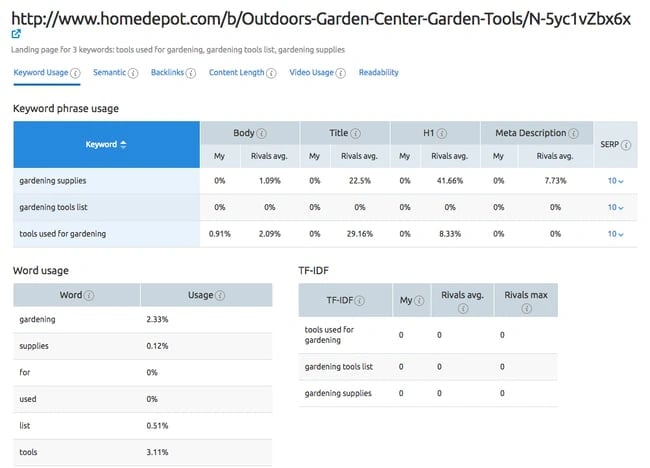Unveiling the mystery of keyword density: How to optimize your content without sacrificing quality or risking search engine penalties.

Image courtesy of via DALL-E 3
Table of Contents
Introduction to Keyword Density
Welcome to the exciting world of blog writing! Today, we’re going to dive into a key aspect of creating content that not only engages readers but also helps your blog get noticed on the vast expanse of the internet. Let’s talk about keyword density and why it’s essential for improving your blog’s visibility through SEO.
Imagine you have a treasure map, and the keywords are like clues that guide you to the hidden treasure. Just like following these clues leads you to the treasure, using the right keywords in your blog posts can lead people searching on the internet to discover your content.
What is a Keyword?
Keywords are specific words or phrases that capture the essence of what your blog post is about. They are like labels that tell search engines and readers what to expect when they click on your post. For example, if you are writing about your favorite ice cream flavors, keywords could be “chocolate ice cream” or “best ice cream shops.”
Why Keywords Matter
Keywords are like magic words that open the door to a treasure trove of information online. When someone types a keyword in a search engine like Google, those magic words help them find exactly what they’re looking for. By using the right keywords in your blog post, you make it easier for people to discover and enjoy your content.
Understanding Keyword Density
Keyword density is an important concept to understand when it comes to writing content, especially for blogs. It refers to the number of times a specific keyword appears in a piece of text compared to the total number of words in that text. Finding the right balance in keyword density is crucial for improving the visibility of your content on search engines.
How to Calculate Keyword Density
To calculate keyword density, you can use a simple formula: (Number of Times Keyword Appears / Total Number of Words) * 100. This formula helps you determine the percentage of times a keyword is used in your content relative to the total word count. It’s essential to keep this percentage within an optimum range to avoid overusing or underusing keywords.
Why Not Too Much or Too Little
Having too many keywords in your content can make it look spammy and unnatural. On the other hand, if you use too few keywords, search engines may not recognize the relevance of your content to the topic. Therefore, striking the right balance in keyword density is key to creating high-quality content that is both reader-friendly and search engine-friendly.
How to Choose Keywords
When it comes to choosing keywords for your blog post, the first step is to make a list of potential keywords. This means brainstorming and writing down all the words or phrases that are related to the topic you are writing about. Think about what words people might type into a search engine to find information on that subject.

Image courtesy of digitalschoolofmarketing.co.za via Google Images
Using Keyword Tools
After you have a list of potential keywords, you can use tools to help you decide which ones to use. One popular tool is Google Keyword Planner, which can show you how often certain keywords are searched for. There are also simpler online keyword tools that can suggest popular keywords related to your topic.
Writing with Keywords
When writing a blog post, it’s important to include your chosen keywords in the headings and subheadings. These act like signposts for your readers and search engines to understand what your content is about. For example, if your blog post is about fun activities for kids, make sure to include the keyword “fun activities for kids” in your main heading.
Including Keywords in the Text
Integrating keywords into the main text of your blog post is crucial for improving your SEO. However, it’s essential to do this naturally, without making your writing sound forced or awkward. Instead of repeating the keyword too many times, try using synonyms or related terms to make your content engaging and informative. For instance, instead of using the term “fun activities for kids” repeatedly, you can mix it up with phrases like “enjoyable things for children” or “exciting games for youngsters.”
Checking and Editing Your Work
Once you have written your blog post and included the necessary keywords, it is crucial to check and edit your work to ensure the right keyword density and overall quality. Here are some tips to help you in this process:

Image courtesy of www.webfx.com via Google Images
Using Online Tools to Check Density
There are various easy-to-use tools available online that can help you check the keyword density in your blog post. These tools analyze your text and provide suggestions for improving the keyword distribution. By using these tools, you can ensure that your blog post is well-optimized for search engines while maintaining a natural flow of content.
Reading Aloud to Check Flow
Another effective way to review your blog post is to read it aloud. When you read your post out loud, you can better identify any awkward phrases or sentences that may need editing. This technique helps you ensure that the content flows smoothly and sounds natural to your readers. So, give your blog post a vocal check to make sure it reads well!
The Impact of Correct Keyword Density on SEO
In the world of blogging and website writing, having the right keyword density can make a big difference in how your content performs on the internet. Let’s dive into how the correct keyword density can impact your blog’s search engine optimization (SEO).
Higher Search Engine Ranking
When you use keywords appropriately throughout your blog post, search engines like Google can better understand what your content is about. As a result, they may reward your website with a higher ranking in search results. This means that when someone searches for a topic related to your blog post, it is more likely to show up higher on the search results page. This increased visibility can drive more traffic to your blog.
Increased Visibility
Higher rankings on search engine results pages mean more people are likely to see your blog post. When your post appears towards the top of the search results, it increases the chances of someone clicking on it to read more. This increased visibility can lead to more readers discovering your blog, engaging with your content, and potentially becoming regular visitors or followers.
Common Mistakes to Avoid
When working with keyword density, it’s important to be mindful of some common mistakes that writers often make. By steering clear of these errors, you can ensure that your blog post is not only optimized for search engines but also enjoyable for your readers.

Image courtesy of blog.hubspot.com via Google Images
Overusing Keywords
One of the biggest blunders writers make is cramming their content with too many keywords. This practice, known as keyword stuffing, not only makes your writing sound unnatural but can also harm your SEO efforts. Search engines frown upon this tactic and may penalize your website by lowering its ranking. Remember, quality content is key, so focus on creating valuable and engaging posts rather than bombarding them with an excessive number of keywords.
Ignoring Keywords
On the flip side, neglecting to incorporate any keywords into your content can also be detrimental. Keywords are essential for helping search engines understand the topic of your post and determining its relevance to users’ search queries. By completely disregarding keywords, you miss out on the opportunity to reach your target audience effectively. Strike a balance by strategically weaving relevant keywords into your writing while maintaining its flow and readability.
Using Irrelevant Keywords
Choosing the right keywords is crucial for attracting the right audience to your blog. Opting for keywords that are irrelevant to your content may drive traffic to your site, but it won’t result in engaged readers or meaningful interactions. Make sure the keywords you select accurately reflect the topic you’re discussing and are seamlessly integrated into your writing. By selecting relevant keywords, you increase the chances of connecting with users who are genuinely interested in your content.
Summary
In this blog post, we explored the concept of keyword density and its significance in SEO and blog writing. We learned that keyword density refers to the number of times a specific keyword appears in a piece of text, and how it helps improve the visibility of blog posts on search engines.
Key Takeaways
First, we defined what a keyword is – a word or phrase that summarizes the main idea of a topic, making it easier for readers to find information online.
Next, we delved into calculating keyword density using a simple formula: (Number of Times Keyword Appears / Total Number of Words) * 100. We also learned why balance is key – having too many or too few keywords can adversely affect the quality of a blog post.
When it comes to choosing keywords, we discussed the importance of making a list of potential keywords and using tools like Google Keyword Planner to discover popular search terms.
We also explored techniques on writing with keywords, such as incorporating them into headings and text naturally to enhance the readability of the content.
Additionally, we highlighted the significance of editing and proofreading to ensure the right keyword density and overall quality of the blog post. Using online tools for checking keyword density and reading the text aloud were recommended methods for improving the flow of the content.
Furthermore, we examined the positive effects of correct keyword density on SEO, including higher search engine rankings and increased visibility for blogs on the internet.
Lastly, we discussed common mistakes to avoid when dealing with keyword density, such as overusing keywords (keyword stuffing), ignoring keywords, and using irrelevant keywords that do not match the content.
Overall, understanding and implementing the right keyword density can significantly impact the success of a blog post in terms of SEO results and reader engagement. By following the best practices outlined in this post, writers can optimize their content for search engines and attract a larger audience.
Want to turn these SEO insights into real results? Seorocket is an all-in-one AI SEO solution that uses the power of AI to analyze your competition and craft high-ranking content.
Seorocket offers a suite of powerful tools, including a Keyword Researcher to find the most profitable keywords, an AI Writer to generate unique and Google-friendly content, and an Automatic Publisher to schedule and publish your content directly to your website. Plus, you’ll get real-time performance tracking so you can see exactly what’s working and make adjustments as needed.
Stop just reading about SEO – take action with Seorocket and skyrocket your search rankings today. Sign up for a free trial and see the difference Seorocket can make for your website!
Frequently Asked Questions (FAQs)
How Many Keywords Should I Use?
A good rule of thumb is to use your main keyword 2-3 times for every 100 words of content. This helps search engines understand the topic of your post without overloading it with keywords.
Can Using Too Many Keywords Hurt My Blog?
Absolutely! Using too many keywords in an unnatural way is called keyword stuffing and search engines like Google can penalize your blog for it. It’s important to use keywords in a natural and relevant way to avoid this issue.
What Tools Can Help with Keyword Density?
There are simple tools like WordCounter and Keyword Density Checker that can help you analyze your writing and ensure the right keyword density. These tools can show you how many times you’ve used a keyword and suggest improvements for better SEO.







